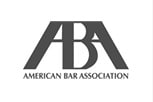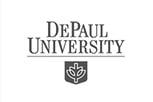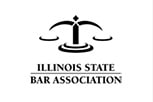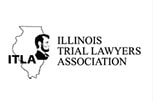Who is Liable When an Autonomous Vehicle is Involved in an Accident?

Millions of dollars are currently being spent by government agencies, Google Inc. and major motor vehicle manufacturers around the globe to support the development of the emerging driverless car industry. In theory, the innovative technology that is involved with autonomous vehicles will make the world’s roadways much safer than they are today. Reality, however, may be a different story.
According to Google, who invests heavily in the technology that it believes will make road travel safer and more efficient, the self driven prototypes that are cruising the streets have only been involved in 14 accidents during the six years and more than 1.9 million miles of testing. Google claims that its cars have not been the cause of any of the accidents. In 11 of the 14 crashes, the self driven vehicle was rear ended. One of the accidents resulted in minor injuries.
While the statistics sound promising for the self-driven technology on the surface, a deeper investigation suggests that there are inherent complexities involved with combining the extremely cautious driving style of autonomous vehicles with the more spontaneous driving styles of humans and unpredictable factors like weather conditions. The California Department of Motor Vehicles (DMV) recently published all of the accident reportsinvolving self-driven vehicles, and although they support Google’s claim that human error was the main cause of the accidents in question, they also demonstrate the issues involved with combining human drivers with robot drivers on America’s roadways.
Who’s to Blame
As Google attempts to teach its robot cars to drive more humanistically, the question ofaccident liability is brought to the forefront. In fact, the question of liability for vehicle accidents that involve self-driven vehicles has become a very complex issue that has the potential to impede the roll-out of these advanced cars. An article published by the San Diego Union-Tribune states that, according to experts, “the issue of liability, if not solved, could delay or even wipe out the vision of driverless cars gaining widespread consumer use.”
While it is true that accidents involving self-driven vehicles will bring challenging liability questions before the courts in coming years, there is no need to write up new legislation to address the issue, and there is no reason to put the roll-out of autonomous vehicles on hold due to the questions at hand. Legal framework already exists that, when applied, will adequately address the question of accident liability when self driven vehicles are involved. When a Chicago product liability lawyer evaluates an accident case, he will consider three parties and to what degree each may be responsible for the accident.
- The Claimant: The attorney will review the details of the accident to determine if the claimant is likely less than 51 percent at fault under the Illinois Modified Comparative Fault Rule.
- Another Driver: He will evaluate the details to decide if it is likely that another driver is mostly to blame for the accident, and to what degree he or she should be held liable.
- Third Party: Sometimes, a third party is to blame for an accident that occurs. The manufacturer of an autonomous vehicle that causes an accident would be considered a third party who could be held liable for injuries and damages under product liability law.
In many situations, more than one party contributes to the cause of a motor vehicle accident. In those situations the question of liability can become more complex, and car insurance companies and vehicle manufacturers will likely be less willing to offer adequate compensation for injuries or damages incurred. Many cases that involve multiple at fault parties, or cases with which the cause of the accident is not blatantly clear will need to be brought before the courts so a determination can be made. Under the Illinois Modified Comparative Fault Rule, the courts will:
- Evaluate the details of the accident thoroughly to determine the cause, or causes that led to the wreck. In more complex cases, the courts or lawyers involved may request that the accident be reconstructed in order to make the cause more clear.
- After evaluating the evidence, the courts will assign a percentage of fault to everyone who was involved in the accident.
- If the plaintiff is found to be less than 51 percent responsible for causing the accident, he or she will be awarded compensation from the responsible parties up to the amount that the judge determines each party is responsible.
- If the plaintiff is found to be 51 percent or more at fault for the accident, he or she will not be awarded compensation regardless of the level of fault of the other parties.
At this time, Google and other parties involved with creating self-driven vehicles are volunteering to take responsibility for accidents caused by robot cars. Under product liability law, however, the decision may not be theirs to make.




